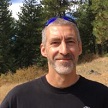This is how mass deforestation is wiping out species around the world
mikayla.makleForests are critical to the Earth’s ecology. They capture and store carbon out of the atmosphere. They can alter the air quality and quantity of drinking water. And they provide the most habitat for the world’s terrestrial species.
Accelerated deforestation continue to threaten the jaguar habitat, especially when it occurs in corridors that connect conservation areas, according to a 2016 study published in the scientific journal Biological Conservation. Without the corridors to travel through, the populations can become isolated and lose genetic diversity, which could then affect the short and long-term survival of the species.

There is a possibility that jaguars could reestablish a population in the United States through Mexico, which is the current northern edge of the range, Dan Thornton, assistant professor in the Washington State University School of the Environment and one of the authors of the study, told Washington State Magazine.



